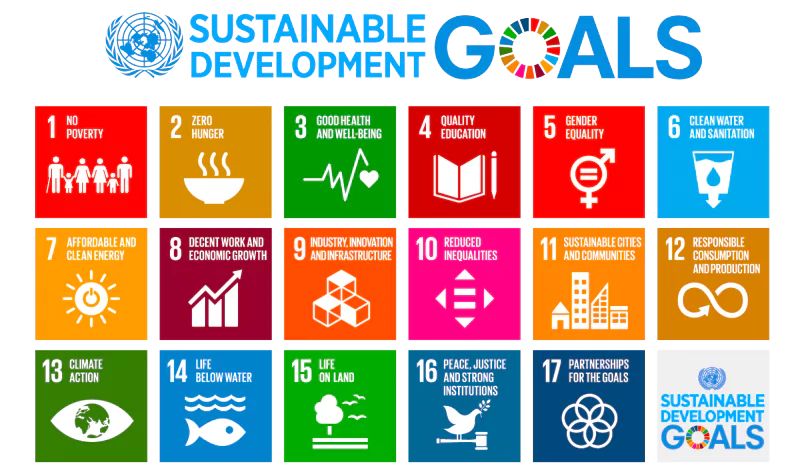Context
2024 is an election year across the world and newly elected governments need to focus on the all-important sustainability issue.

Sustainable Development Goals: The Agenda-2030
- Adoption: Sustainable Development Goals (SDGs) were adopted by the UN General Assembly in 2015.
- Focus: It identified 17 Sustainable Development Goals with 169 specific targets to be achieved by 2030.
- Mandate: The programme is internationally non-binding, but all countries have committed to work towards these goals as transiting to sustainable development is a common global endeavor.
Difference of Sustainable Development Goals (SDGs) from Millennium Development Goals (MDGs):
- The Sustainable Development Goals replaced the MDGs.
- The SDGs are broader in scope than the MDGs and reflect the view that development needs to be economically, socially, and environmentally sustainable.
- There are 17 SDGs focused on five elements: people, planet, peace, prosperity, and partnership.
|
Enroll now for UPSC Online Course
Arising Concerns
- Slow Progress: According to available reports, progress is off track.
- From 2015 to 2019, there were some improvements, although insufficient to achieve the goals.
- The outbreak of the COVID-19 pandemic and other global crises have virtually slowed down the progress.
- World leaders agreed to step-up efforts to deliver SDGs by 2030. But how far these global pronouncements are operative at the ground level remains a big question.
- Less Attention: Little or no attention towards the goals related to the environment and biodiversity (including responsible consumption and production, climate action, life below water, and life on land) is a matter of great concern.
- The present trend, if it continues, will lead to accelerated environmental degradation and the purpose of transiting towards sustainability defeated.
Actions Required
- The UN Sustainable Development Goals Report, 2023 identified five key areas for urgent action:
- Commitment of governments to seven years of accelerated, sustained and transformative actions to deliver on the promises of SDGs.
- Concrete, integrated and targeted government policies and actions to eradicate poverty, reduce inequality and to end the war on nature with a focus on advancing the rights of women and girls and empowering the most vulnerable.
- Strengthening of national and subnational capacity, accountability, and public institutions to deliver accelerated progress.
- Recommitment of the international community to deliver and mobilise resources to assist developing nations.
- Continued strengthening of the UN development system.
- Deliberation: A team of 64 scholars analysed 3,000 studies, within national and global governance to address pressing challenges of poverty eradication, social justice and environmental protection.
- The results were published in the journal, Nature Sustainability, September 2022 issue, calling for wide deliberations, especially in the context of Agenda 2030 implementation.
- Need to focus on five dimensions: Global governance, domestic political systems, the integration and coherence of institutions and policies, the inclusiveness of governance from local to global level, and the protection of ecological integrity.
- They concluded that ‘the SDGs thus far have had mainly discursive effects but also have led to some isolated normative and institutional reforms.
- Overall assessment indicates that although there are some limited effects of the SDGs, they are not a transformative force in and of themselves.
- The UN report, ‘Future is Now’ (2019), provides some guidelines for action:
- Systemic Approach: It emphasised that ‘The true transformative potential of the 2030 Agenda can be realised through a systemic approach that helps identify, manage trade-offs while maximising co-benefits.
- By co-benefit the stress is on the activities that, while addressing one SDG, will help address others at the same time.
- Local Solutions: The report suggests adopting locally best suited entry points following regional and national priorities and applying four levers — governance, economy and finance, individual and collective action, and science and technology to propel actions.
- Actors from these levers must develop partnership and establish novel collaboration to design and rapidly implement integrated pathways to sustainable development corresponding to the specific needs and priorities of the country.
- Brundtland Report: The famous Brundtland report, “Our Common Future”, expressed the hope that politicians and policymakers will take note of the suggestions advanced in this report and steer the world towards sustainable development.
About Sustainable Development
These are the developments that meet the needs of the present without compromising the ability of future generations to meet their own needs.
- According to the Brundtland Commission, in its report Our Common Future (1987): Sustainable development calls for concerted efforts towards building an inclusive, sustainable and resilient future for people and the planet.
Role of NITI Aayog in Achieving Sustainable Development Goals:
- NITI Aayog has the twin mandate to oversee the adoption and monitoring of the SDGs in the country and promote competitive and cooperative federalism among States and UTs.
- The task at hand for NITI Aayog is not just to periodically collect data on SDGs but to proactively realize the goals and targets.
Brundtland Report:
- In 1987, the World Commission on Environment and Development (WCED), which had been set up in 1983, published a report entitled “Our Common Future”. The document came to be known as the “Brundtland Report” after the Commission’s chairwoman, Gro Harlem Brundtland.
|
Enroll now for UPSC Online Classes
Also Read: Human Development And Sustainable Development
![]() 4 May 2024
4 May 2024
